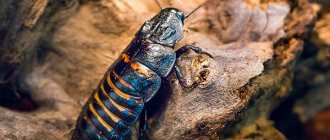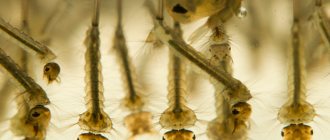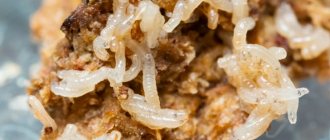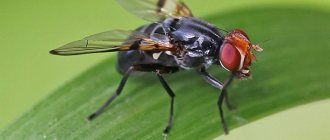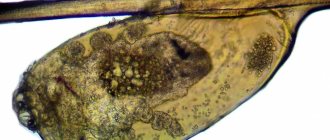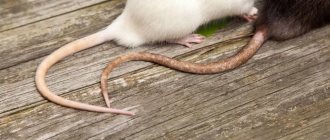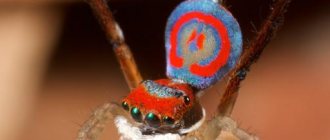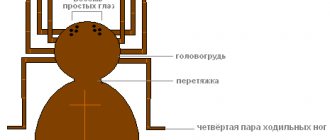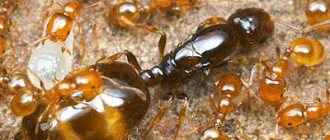The complex structure of a mosquito. What is such a simple insect at first glance? Why do females need human blood? Life cycle and stages of development of a mosquito. Reproduction and characteristics of females. Benefits from mosquitoes and important for nature.
When it comes to mosquitoes, this does not evoke the most pleasant emotions for us; we imagine unbearably annoying insects that emit very irritable squeaks and inflict bites, as a result of which we suffer from itching. We also know that they are quite dangerous because they can carry diseases.
There are many types of mosquitoes and there are some that are absolutely safe for people. It’s hard to believe, but these insects have not been fully studied by scientists, and we don’t know everything about them. Next, we will look at them in more detail, find out the structure of a mosquito, their life cycle, and the characteristics of these insects.
Anatomy
If scientists have not yet fully studied this small insect and quite a lot of questions remain, then all the details regarding their structure are known. At first glance, such a “primitive” creature without any special features is very complex. Their small body has almost all the internal organs of higher mammals.
Regardless of the type of mosquito, they all have similar external signs. They have a small thin body, the length depending on the species reaches 4-14 mm. All individuals have thin, long legs and transparent wings. The narrow wings can have a span from 5 mm to 3 cm, which also depends on the specific species. The color of the body is gray, brown or yellow; there are species that have rare colors, black and green.
The structure of a mosquito is divided into head, chest and abdomen. Individuals have six legs, the abdomen is always smaller in size than the chest. The chest is divided into 10 segments. When blood-sucking animals are saturated, the abdomen swells and increases significantly in size, so in saturated individuals the abdomen is larger than the chest.
Types of mosquitoes
Of the more than 3 thousand species of mosquitoes, the most widespread is the common mosquito - that same annoying insect whose squeak is familiar to everyone since childhood.
Common mosquito
This is one of the species of the genus of true mosquitoes. The second and very apt name of the insect is the squeak mosquito, which was widespread throughout the world during the period of the Great Geographical Discoveries.
These are small mosquitoes, 3-8 mm in size. Males drink plant juices, females also feed on nectar and juices to maintain life, and when bearing offspring, they chase people and animals. Females lay eggs in gutters and holes, flooded basements, ponds and other bodies of water. The larvae feed on aquatic vegetation and decomposed organic matter.
Squeaks belong to the category of epidemiologically significant insects, carrying meningitis, Japanese encephalitis and avian malaria - a dangerous animal disease.
Squeak mosquito, or common mosquito (lat. Culex pipiens).
Mosquitoes are biting
An extensive genus of mosquitoes, including about 700 species. These are small insects that are more often found in the tropics and subtropics, near human habitations, although they are common throughout the entire range of mosquitoes.
A distinctive feature of the biters is the thin white stripes decorating the body and legs. These mosquitoes bite no harder than their relatives, and the generic name translated from Greek means vile and disgusting. Biters carry dangerous diseases such as dengue fever and yellow fever.
The yellow fever mosquito belongs to the genus Biting mosquitoes.
In the larval stage, biting mosquitoes feed on algae and various microorganisms. Having pupated, they rise to the surface of the water and after 2 days they turn into an adult mosquito.
Malaria mosquitoes
Another name for insects is anopheles, which is translated from Greek as worthless and useless. Malaria mosquitoes live everywhere except Antarctica and carry Plasmodium falciparum, a single-celled parasite that causes malaria.
In appearance they are very reminiscent of ordinary mosquitoes, but differ in some characteristic features.
The hind legs of the malaria mosquito are much longer than the front ones, so it sits with its butt raised, while a real mosquito sits straight or vice versa, with its abdomen lowered. The second feature of the malaria mosquito is a pair of long antennae, like the sting.
Anopheles stephensi malaria mosquito.
Bell mosquito
A harmless insect, also known as the mosquito mosquito. Lives everywhere, gravitates to damp, low-lying places. The dances of a whole host of mosquitoes can be observed on warm evenings in summer and autumn. Twitch mosquitoes are usually yellowish-green or brown, do not harm humans or animals, and live for about 2-5 days.
Bell mosquito.
Swamp mosquito
Due to the close connection of insects not only with moss swamps, but also with flooded meadows, they are often called meadows. They are not interested in blood; what swamp mosquitoes feed on in nature is the juices and nectar of field plants.
Mosquito species Limonia nubeculosa.
Centipede mosquito
There are about 4,200 species of the family of long-legged mosquitoes found in the world; their second name is caramory. These are mosquitoes, ranging in size from 2 mm to 10 cm, unpleasant to look at, but completely harmless. Their characteristic feature is extremely long limbs with clearly visible processes (spurs).
Most species of centipedes are often mistaken for giant mosquitoes or ordinary mosquitoes, but there are very original species that cannot be confused with other insects. For example, the decorated ctenophora, also known as the festive centipede, has an unusual black and yellow body color.
Another representative of the family is a harmful centipede, which, although it does not feed on blood, in the larval stage causes serious damage to agriculture, gnawing roots, bulbs and even low-lying leaves of plants.
Centipede mosquito.
Head structure
These individuals have perfect infrared vision. There are compound eyes on the head that provide full all-round visibility. This allows them to avoid danger and for the same reason, it is not so easy for us to kill this insect.
Also on the head there are antennae, which include 15 segments. The very first segment is located on the head, and the second has Johnston's organ, which is an organ of hearing. The first distinguishing feature between males and females is the antennae.
After the first 2 come the whip segments; in females they are cylindrical in shape and covered with short hairs, which are quite few. But in males they have a conical shape, which is covered with thick and long hairs.
Even without using a microscope, this is easy to notice because the antennae appear fluffy. According to scientists, these bloodsucking antennae partially replace the olfactory organ, since it is absent.
They have a piercing-sucking type of mouthparts. It includes 6 sharp needles that are covered with a flexible, soft cover. The cover performs the protective function of the proboscis and protects it from damage. The first four needles are placed in the form of a stiletto; the first outer ones have an additional file, which provides easy puncture of the skin. The role of their teeth is performed by hard chitinous bristles.
They have hollow internal tubes, it is designed for saturation, through which the mosquito sucks blood. The mosquito uses the second tube to inject poison, which serves as an anesthetic.
Only females have a fairly complex structure of the oral apparatus. In males it is underdeveloped and their diet consists exclusively of flower nectar.
Despite the rather small size of their heads, mosquitoes have a large brain. It has 2 longitudinal nerve trunks that run parallel to each other in the chest area and connect above the pharynx in the head.
Also, the main part of the brain is supplemented by ganglia; they are nerve nodes that are located in the abdomen and are also located in the chest segments. The ganglia perform a very important function, since they coordinate the work of absolutely all organs.
Now you will once again be convinced that even such a tiny creature as a mosquito is another proof of Divine creation!
Despite the fact that the mosquito is a tiny creature, the Almighty mentioned it in the Holy Quran. He said:
Meaning: “Indeed, Allah does not hesitate to make an example of a mosquito or something larger than it.”
If people knew the amazing features of the mosquito, their iman and knowledge would increase.
Even if they do not know about it, believers know that this is the truth, because Allah does not give an example of anything just like that, but only according to His perfect wisdom.
When they studied a mosquito under an electron microscope at a magnification of 400,000 times, they found that there are 100 eyes on its head - the weight of one mosquito is one thousandth of one gram (!) - and on the head of such a mosquito there are one hundred eyes, in its mouth there are 48 teeth, It has three hearts: one central and two for each wing, and each heart has two valves and two ventricles.
A mosquito has an organ that doesn't exist, a bird has a heat-sensitive organ - it doesn't see by color or shape or shape - it sees things by their temperature! For example, if in winter the room is only five degrees warm and in this room there is a child whose body temperature is 36-37 degrees, the mosquito does not see anything in the room except the child.
The mosquito also has an organ that analyzes blood. For example, if two people sleep in the same bed, he does not bite the one whose blood he did not like, but bites the other one.
The mosquito has the ability to thin the blood: human blood is thick - it cannot pass through the mosquito's trunk, and the mosquito thins it. The mosquito also has a local anesthesia system, so the mosquito bite is felt only a few seconds after the blood has been absorbed. When a person feels a mosquito bite, he hits her with all his might, and the mosquito is already on the ceiling of the room.
In addition to the fact that she has a heat-sensitive organ, the ability to analyze blood and thin it, the ability to relieve pain, there are one hundred eyes on her head, 48 teeth, three hearts in her chest, and her trunk consists of 6 parts: 4 of them are acute knives. The remaining 2 parts, when joined together, form an empty tube for blood suction. The mosquito's legs have claws for use on uneven surfaces and suction cups for smooth surfaces - this is the creation of Allah!
Let them show what was created by someone else.
Attention!
How can a mosquito know about the peculiarities of human blood clotting, etc.?
Man learned about the need for the process of administering anesthesia before starting an operation only thanks to the development of science. Who instilled this knowledge in the mosquito from the moment of birth?
The answer is obvious: the Creator of all things is Allah Almighty.
If you look carefully, even within one tenth of a millimeter of a living being there is the highest engineering project.
Allah Almighty is the Creator of all things, so He has knowledge of the anatomical structure of the human body and the mosquito down to the smallest details.
People who are capable of reflection can find countless proofs of creation in Allah's creations. Allah points out this truth in the Qur'an:
{ ان الله لا يستحيي ان يضرب مثلا ما بعوضة فما فوقها}
Mavlidin Kamilovich.
Breast
If we talk about the general appearance, then this part looks quite massive, but after studying it in more detail, you can understand that this is not entirely true. It includes 3 segments that are unevenly developed.
The strongest and most developed middle part, it contains all the flying muscles, and the wings are also attached. In addition to being responsible for flight, the middle part provides respiratory functions.
The front part includes the insect's fairly long neck. The rear part, the metanotum, has another spiracle and is also responsible for the insect’s respiration, but unlike the middle segment, it is rather poorly developed.
Each segment has a pair of legs. The paws, in turn, also consist of segments, of which there are 5 on each limb. On the last segment there are suction cups and claws, which allow the mosquito to stay on absolutely any surface and ideally stay on the ceiling.
It’s interesting, but now mosquitoes have a slightly different body structure; previously they had 4 wings, but now there are only 2 left. However, now they still have rudiments of the halteres from the second pair of wings, which produce this incredibly annoying squeak. By the way, only females squeak, as well as bite.
The wings have an oval elongated shape and a transparent color. They consist of veins and connecting membranes; the plates are covered with very small scales. Most individuals have transparent scales, but there are also those with different color shades. If colored scales accumulate in one place, a colored spot is formed.
In species of mosquitoes that have black and green colored bodies, colored scales accumulate in such a way that a pattern is formed. It’s hard to believe that these small insects wave with a vibration frequency of up to 1000 times per second. Some scientists argue that the wings also contain nerve endings, but in this case they act as sensory organs.
Who are mosquitoes?
Mosquitoes are representatives of the Diptera family and belong to the long-whiskered group. In total, there are about 3 thousand species of these insects. In Russia there are mosquitoes of the genus biting, malarial and true, and in total more than 100 species of them are common in our country. In the city, the most widespread mosquito is the common mosquito.
Body structure
A mosquito has the following structure:
- the body is thin, no more than 1.5 cm long, colored gray, yellow or brown; the body consists of three main parts - the head, chest and abdomen;
- on the head there are antennae, divided into 15 small segments, and an oral apparatus, represented by two pairs of jaws, a tongue, numerous small teeth and a pair of lips; the lips form a kind of groove in which long needles are located; the groove of females has bristles and is somewhat longer than that of males;
- the abdomen is divided into ten segments; the last two are parts of the external genitalia, near which the anus is located; the first eight segments are connected to each other by an elastic membrane - the pleura, and each consists of two plates - ventral and dorsal, the second - sixth segments are carriers of spiracles;
- for insects of the mosquito family, the chest is the central organ to which, in addition to the head and abdomen, the legs and wings are attached; the chest itself consists of three parts: prothorax, mesothorax and metathorax; the prothorax has an exoskeleton consisting of three plates; The mesothorax consists of the same number of plates, but it is more developed and bears the anterior thoracic spiracle; the metathorax is located on the sides of the thoracic region
- the wings are thin and narrow, consisting of veins located lengthwise and transversely, along the edge of each wing is framed by a costal vein; scales are unevenly located on the surface, which form a fringe along the rear edge of each wing;
- the legs are located on the mesothorax and their number is six; each leg is divided into a pelvis, trochanter, femur, tibia and tarsus; each paw, in turn, consists of five segments and on the last one has two claws; There is one sucker under each claw; on the inner parts of the hind tibia there are several flat spines arranged in a row.
Females and males - looking for differences
Male and female mosquitoes differ in both external characteristics and food preferences:
- female representatives feed on blood, as it is a source of protein, lipids and iron; thanks to such food, female mosquitoes are able to continue the race; after satiation, the mosquito flies to a secluded place, where it digests the extracted portion for several days, at the same time the eggs mature in its body; For males, for normal life, flower nectar, which is saturated with carbohydrates, is enough; carbohydrates in the mosquito’s body are converted into glycogen - this is the energy that the male gradually consumes during flights;
- during the act of feeding, females must pierce the dense skin, and therefore their oral apparatus is equipped with piercing needles located in the proboscis; males do not have these needles, since they simply do not need them;
- a male mosquito has longer hairs on its antennae and this is noticeable even without a microscope; they look like soft fluffy feathers; The mustache of the female half of the mosquito family is very thin and inconspicuous.
Digestive tract
No matter how strange it may sound, the digestive tract of mosquitoes begins with the head. The oral apparatus connects to the foregut, which in turn is divided into the pharynx, which has extensions before and after the brain.
The foregut has three esophageal appendages and two salivary glands. But they do not perform any digestive functions; they are storage tanks for food and water reserves, so the insect can do without a food source for a long time.
When there is no source of food for a long time, the reserves enter the stomach, where the process of processing and assimilation of food occurs. There is also a small and rectal hindgut.
Circulatory system
The entire circulatory system is supported by the work of the heart and diaphragm. In other words, blood is pumped, but there is no separate system. If you were wondering whether a mosquito has a heart, then the answer is clear - no.
There are no hearts in our usual understanding; they are presented in the form of a muscular tube, like a trachea, which acts as a heart and ensures blood circulation in the body. This tube is located between 1-7 abdominal segments. Interestingly, insects themselves have colorless blood.
How dangerous are mosquitoes?
The main danger of mosquitoes is that they are carriers of diseases. The development of diseases can be triggered by parasites, viruses and pathogenic bacteria that the bloodsucker carries on its paws and proboscis.
So, what diseases do mosquitoes carry?
- Different types of malaria, which are parasitic diseases. Their causative agents are parasites belonging to the Plasmodium species. Such diseases are carried by mosquitoes belonging to the genus Anopheles, popularly known as malaria mosquitoes.
- Lymphatic filariasis, the symptom of which is elephantiasis. Many types of bloodsuckers can carry this disease.
- Diseases caused by the vector Aedes aegypti. These include chikungunya, yellow fever and dengue fever. The latter most often affects travelers who have visited southern Central Asia, Central America and the Caribbean.
On a note! It is characteristic that Dengue fever can only be transmitted through infected mosquitoes; this disease does not spread from person to person!
Important! About 700 million people annually become infected with various diseases through mosquito bites. Residents of South and Central America, Africa, Mexico, Asia and Russia are most often affected. And at the same time, about 2 million people die from such diseases every year!
Differences between females and males
In addition to external differences, females and males have different food preferences. Females feed on blood because it is a source of essential microelements for procreation. When the female is saturated with blood, she looks for a secluded place for herself, where for several days she can digest the food she receives and at the same time wait for the offspring to mature.
For males, it is enough to get carbohydrates, which are contained in the nectar of flowers. They are processed in the body into glycogen, which the insect needs to obtain energy. There are differences in the structure of the oral apparatus; females have special needles with which they puncture the skin, while males simply do not have them.
A fairly striking difference between females and males is the antennae. In the female half they are quite inconspicuous, resembling 2 inconspicuous antennas, but in the male representatives they are much more beautiful, reminiscent of fluffy and soft feathers.
Description of the immature individual
The life cycle of a mosquito includes several stages - egg, larva, pupa, adult. At the larval stage, the appearance is significantly different, as is the habitat.
The female lays eggs in a body of standing water or damp soil. Within a few hours the larva appears. Body size does not exceed 2 mm. Outwardly it looks like a gray worm. The entire development cycle is 8-30 days. Directly depends on temperature conditions. During this time, 4 moults occur, after each immature mosquito increases in size to 10 mm.
The structure of a mosquito larva
An immature mosquito consists of a head, chest, and abdomen. However, visually it is a single whole. The surface is covered with small fibers. Breathing is cutaneous-gill, so periodically the larva dives under water to a depth of 1 m. It feeds on protozoa and passes through itself up to 1 liter of water per day. The inside is primitive, no brains, no heart.
On the head there are 2 simple eyes and complex, small antennae. Vision is poorly developed. The mouthparts do not have a spiny combination; they simply swallow food. The abdomen consists of 8 segments and looks like a tail.
The development of the larva ends with pupation. The extremely mobile pupa has the shape of a comma and lives in the water column. Complex processes take place inside, and after a few days the shell breaks. Initially, the head, chest, abdomen, then limbs are shown. This is how an adult mosquito appears.
Males are always born first. They gather in the grass along the pond, waiting for females. For some time, the young generation of both sexes feeds on nectar and leads a carefree lifestyle. After mating, females turn into bloodthirsty individuals. They need protein for the formation of eggs and the reproduction of a healthy generation.
With the exception of Antarctica, mosquitoes are everywhere. Each of us is familiar with it, and we all know how the situation can turn out if the window is open in a hot, humid summer and there is no mosquito net on it - the night will be ruined, and by the morning the body will be covered with itchy bite marks. And at such moments it seems that this insect can only cause harm, especially if you take into account the diseases that it carries. But the mosquito is not so simple. Let's find out a little more about him.
Life cycle
- An insect goes through four stages of development during its entire life cycle. In the first three stages, namely eggs, larvae and pupae, they develop in a very moist environment, this can be waterlogged soil or water.
- Clutches of eggs can be located in completely different places, where humidity is maintained, larvae emerge from the eggs, and their appearance may differ depending on the species. The external differences of the larvae lie in the shape of the head; in some they are narrow and elongated, while in others, on the contrary, they are wide and short.
- At this stage, they are already quite developed, have organs of vision that are located on the sides of the head and oral apparatus. Depending on the type of mosquito, the mouthparts can be of the sucking or scraping type.
- Species that belong to predatory individuals have mouthparts that can not only catch food, but also chew it. The abdomen itself has 9 segments, and the chest consists of plates that are fused together.
- Regarding the digestive tract of these individuals, it is presented in the form of a straight tube. Food is digested in the intestines, and the digestive tract also has salivary glands and intestinal appendages.
- Next comes pupation, and the larva changes into a pupa. At this stage, individuals are almost completely formed. The pupa has a large number of air chambers, for this reason they are constantly on the surface of the water.
- Unprotected individuals at this stage of development become easy prey and food for fish and other predators. Young sexually mature individuals emerge from the pupae and are ready to reproduce; they go in search of a pair for mating.
Reproduction and lifespan
The greed of female mosquitoes for the blood of warm-blooded mosquitoes is explained by the instinct of nature caused by the need to lay eggs. At the moment when the mosquito manages to drink blood, it fulfills its mission, dictated by nature.
And he does this closer to the water: near ponds, quiet rivers, barrels and various containers with rainwater and water intended for household needs. To lay eggs, the number of which reaches 150, she needs moisture. The mosquito mother performs this procedure approximately once every 2-3 days, thereby providing herself with a huge number of offspring.
Photo of mosquito larvae
The eggs of mosquito species in cold climates are more tolerant of cold temperatures than those of species living in more favorable conditions. The larvae develop quickly in calm water, and a couple of days after leaving it they are already able to reproduce on their own.
It is a common belief that a mosquito only lives for one day. But this is far from true. Of course, being close to a person, annoying insects may not last long. On average, an adult mosquito lives only about five days. But under favorable conditions, mosquitoes last much longer.
Their lifespan can be affected not only by human exposure, but also by meteorological factors, as well as the vital activity of other insects and parasites. Males can see this white light for up to 3-4 weeks. Females exist much longer, although in rare cases, but their lifespan can reach two months.
The life cycle of a mosquito consists of four stages of development:
- Egg: every 2-3 days the female lays 30 to 150 eggs in the water, which mature in 2 to 8 days.
- Mosquito larva: emerges from an egg, then lives in a body of water and feeds on microorganisms there. Breathes air through a special tube. During its development and formation, it goes through 4 molts until it finally turns into a pupa.
- Pupa: its development also occurs in water and lasts up to 5 days. As it matures, it changes color, becoming black.
- Imago: is an already adult mosquito living on land.
First, the males fly out into the light, having gathered in a swarm, they wait for females to mate. After mating, the fertilized female goes in search of blood, which she needs to lay her eggs.
Reproduction
Not many people know that the female, just like the male, can easily get by with just the nectar of flowers in order to get enough and not die of hunger. But in order for her to continue her race and produce offspring, she needs to be saturated with blood.
The female attracts males to mate with a characteristic squeak. The halteres that they have left after the second pair of wings are capable of emitting a squeak, and not a rough buzz, since they are very small in size. If there is a swarm of mosquitoes nearby and a squeak is heard from there, then the females are ready to reproduce and, of course, they need blood.
These small insects remain a mystery to scientists to this day; many studies have not made it possible to study them to the end and discover all the secrets of their life. But at the same time, we managed to get questions about the main questions, for example, why they squeak, why only females bite, do they have a heart and how many teeth do they have. If you learn a little more about them, they will definitely surprise anyone.
Interesting facts about mosquitoes
- It was the mosquito that played a key role in the good old science fiction film “Jurassic Park”; through the blood found in an ancient mosquito trapped in amber, scientists were able to access the DNA of dinosaurs and thus “resurrect” these prehistoric lizards.
- The flight speed of a mosquito is on average 3.2 km per hour, but skillfully using air currents, mosquitoes are able to fly up to 100 km.
- The mosquito's weight is so small that once it hits the web it will not cause vibrations and will not attract the spider's attention.
